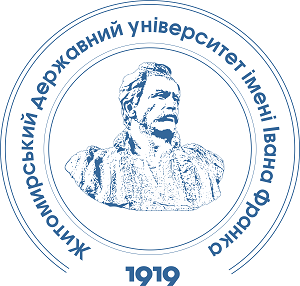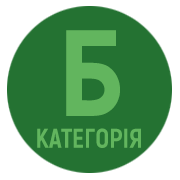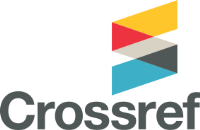PATTERNS OF CONTOUR ALGAL COMMUNITIES’ FUNCTIONING IN AQUATIC ECOSYSTEMS OF THE DNIEPER BASIN (UKRAINE) UNDER DIFFERENT ALTERNATIVE STABLE REGIMES
DOI:
https://doi.org/10.32782/naturaljournal.8.2024.24Keywords:
contour algal communities, alternative stable states, climate change, nitrogen-to-phosphorus ratioAbstract
The paper presents the concept of contour algal communities functioning in aquatic ecosystems of the Dnieper basin under different alternative stable regimes. The major factors are distinguished, which can trigger the shift of the water bodies under study from clear water regime to high turbidity regime: climate change, changes in nutrient conditions and water-level drawdown. In particular, higher water temperature, increase in phosphorus content, a decline in N:P-ratio cause planktonic Cyanobacteria blooms, which intercept solar radiation and suppress photosynthesis of contour algal communities. The water-level drawdown brings about the reduction of the water volume, increase in the nutrient concentration, acceleration of the water column’s warming in spring and intensive phytoplankton growth, decreasing the Secchi-disk transparency. In response to the complex effect of these changes countour algal communities activate the mechanisms aimed at maintaining the community’s dynamic equilibrium under the unfavorable conditions of high turbidity. These mechanisms include changes in the ratio of phyla with a decrease in the diatoms’ share and increase in the shares of green and blue-green algae; gaining the competitive advantage by diatoms from Rhopalodiaceae family with nitrogen-fixing endosymbionts; enlargement in the share of shade-tolerant species and species with high saprobity index. These transformations in the structure of contour algal communities may be of practical value and can be used as reliable biological indicators of regional and global environmental changes.
References
Cano M.G., Casco M.A., Claps M.C. Effect of environmental variables on epiphyton in a Pampean lake with stable turbid-and clear-water states. Aquatic Biology. 2012. № 15. Р. 47–59. https://doi.org/10.3354/ab00409.
DeYoe H.R., Lowe R.L., Marks J.C. Effects of nitrogen and phosphorus on the endosymbiont load of Rhopalodia gibba and Epithemia turgida (Bacillariophyceae). Journal of Phycology. 1992. № 28. Р. 773–777. https://doi.org/10.1111/j.0022-3646.1992.00773.x.
Floener L., Bothe H. Nitrogen fixation in Rhopalodia gibba, a diatom containing blue-greenish inclusions symbiotically. In: Endocytobiology: Endosymbiosis and Cell Biology, a Synthesis of Recent Research. Ed. by Schwemmler W., Schenk H. Berlin: Walter de Gruyter and Co., 1980. Р. 541–552. https://doi.org/10.1515/9783111385068-053.
Gosselain V., Hudon Ch., Cattaneo A., Gagnon P., Planas D., Rochefort D. Physical variables driving epiphytic algal biomass in a dense macrophyte bed of the St. Lawrence River (Quebec, Canada). Hydrobiologia. 2005. № 534. Р. 11–22. https://doi.org/10.1007/s10750-004-1318-z .
Greenwood J.L., Rosemond A.D. Periphyton response to long-term nutrient enrichment in a shaded headwater stream. Canadian Journal of Fisheries and Aquatic Sciences. 2005. № 62. Р. 2033–2045. https://doi.org/10.1139/f05-117.
Guiry M.D., Guiry G.M. AlgaeBase. World-wide electronic publication, National University of Ireland, Galway. [Electronic resource] URL: http://www.algaebase.org (access date 02.02.2023). Hansson L.-A. Effects of competitive interactions on the biomass development of planktonic and periphytic algae in lakes. Limnology and Oceanography. 1988. № 33 (1). Р. 121–128. https://doi.org/10.4319/lo.1988.33.1.0121.
Hansson L.-A. Factors regulating periphytic algal biomass. Limnology and Oceanography. 1992. № 37 (2). Р. 322–328. ttps://doi.org/10.4319/lo.1992.37.2.0322.
Hartmann D.L., Klein Tank AMG, Rusticucci M., Alexander L.V., Brönnimann S., Charabi Y., Dentener F.J., Dlugokencky E.J., Easterling D.R., Kaplan A., Soden B.J., Thorne P.W., Wild M., Zhai P.M. Observations: atmosphere and surface. In: Climate Change: The Physical Science Basis. Contribution of Working Group I to the Fifth Assessment Report of the Intergovernmental Panel on Climate Change. Cambridge University Press: Cambridge, UK and New York. NY, 2013.
Havens K.E., Hauxwell J., Tyler A.C., Thomas S., McGlathery K.J., Cebrian J., Valiela I., Steinman A.D., Hwang S.-J. Complex interaction between autotrophs in shallow marine and freshwater ecosystems: implications for community responses to nutrient stress. Environmental Pollution. 2001. № 113. Р. 95–107. https://doi.org/10.1016/S0269-7491(00)00154-8.
Hilt S. Regime shifts between macrophytes and phytoplankton – concepts beyond shallow lakes, unravelling stabilizing mechanisms and practical consequences. Limnetica. 2015. № 34 (2). Р. 467–480. https://doi.org/10.23818/limn.34.35.
Janssen A.B.G., Teurlincs S., An, S., Janse J.H., Paerl H.W., Mooij W.M. Alternative stable states in large shallow lakes? Journal of Great Lakes Research. 2014. № 40. Р. 813–826. https://doi.org/10.1016/j.jglr.2014.09.019.
Jeppesen E., Søndergaard M., Jensen J.P. Climatic warming and regime shifts in lake food webs – some comments. Limnology and Oceanography. 2003. № 48 (3). Р. 1346–1349. https://doi.org/10.4319/lo.2003.48.3.1346.
Karosienė J., Kasperovičienė J. Peculiarities of epiphyton algal communities formation on different macrophyte species. Botanica Lithuanica. 2012. № 18 (2). Р. 154–163. https://doi.org/10.2478/v10279-012-0017-3.
Lalonde S., Downing J.A. Epiphyton biomass is related to lake trophic status, depth, and macrophyte architecture. Canadian Journal of Fisheries and Aquatic Sciences. 1991. № 48. Р. 2285–2291. https://doi.org/10.1139/f91-268.
Marks J.C., Power M.E. Nutrient induced changes in the species composition of epiphytes on Cladophora glomerata Kütz. (Chlorophyta). Hydrobiologia. 2001. № 450. Р. 187–196. https://doi.org/10.1023/A:1017596927664.
Müller U. The vertical zonation of adpressed diatoms and other epiphytic algae on Phragmites australis. European Journal of Phycology. 1999. № 34 (5). Р. 487–496. https://doi.org/10.1080/09541449910001718841.
Mur L.R., Gons H.J., Van Liere L. Some experiments on the competition between green algae and blue-green bacteria in light-limited environments. FEMS Microbiology Letters. 1977. № 1 (6). Р. 335–338. https://doi.org/10.1111/j.1574-6968.1977.tb00646.x.
Nakayama Takuro Ikegami Y., Nakayama Takeshi Ishida K.-I., Inagaki Y., Inouye I. Spheroid bodies in rhopalodiacean diatoms were derived from a single endosymbiotic cyanobacterium. Journal of Plant Research. 2010. № 124. Р. 93–97. https://doi.org/https://doi.org/10.1007/s10265-010-0355-0.
Oliveria D.E., Ferragut С., Bicudo D.C. Relationships between environmental factors, periphyton biomass and nutrient content in Garças Reservoir, a hypereutrophic tropical reservoir in southeastern Brazil. Lakes and Reservoirs: Research and Management. 2010. № 15. Р. 129–137. https://doi.org/10.1111/j.1440-1770.2010.00428.x.
Parparov A.S. Some characteristics of the community of autotrophs of Lake Sevan in connection with its eutrophication. Hydrobiologia. 1990. № 191. Р. 15–21. https://doi.org/10.1007/BF00026034.
Prechtl J., Kneip C., Lockhart P., Wenderoth K., Maier U.-G. Intracellular spheroid bodies of Rhopalodia gibba have nitrogen-fixing apparatus of cyanobacterial origin. Molecular Biology and Evolution. 2004. № 21. Р. 1477–1481. https://doi.org/10.1093/molbev/msh086.
Protasov A.A. Conceptual models of the contourization processes in the aquatic ecosystems. Hydrobiological Journal. 2014. № 50 (1). Р. 3–19. https://doi.org/10.1615/HydrobJ.v50.i1.10.
Scheffer M., De Redelijkheid R. M. R., Noppert F. Distribution and dynamics of submerged vegetation in a chain of shallow eutrophic lakes. Aquatic Botany. 1992. № 42. Р. 199–216. https://doi.org/10.1016/0304-3770(92)90022-B.
Scheffer M., Hosper S.H., Meijer M.-L., Moss B., Jeppesen E. Alternative equilibria in shallow lakes. Trends in Ecology and Evolution. 1993. № 8. Р. 275–279. https://doi.org/10.1016/0169-5347(93)90254-M.
Scheffer M., Rinaldi S., Gragnani A., Mur L.R., Van Nes E.H. On the dominance of filamentous Cyanobacteria in shallow, turbid lakes. Ecology. 1997. № 78 (1). Р. 272–282. https://doi.org/10.2307/2265995.
Scheffer M., Carpenter S., Foley J.A., Folke C., Walker B. Catastrophic shifts in ecosystems. Nature. 2001а. № 413. Р. 591–596. https://doi.org/10.1038/35098000.
Scheffer M., Straile D., Van Nes E., Hosper H. Climatic warming causes regime shifts in lake food webs. Limnology and Oceanography. 2001b. № 46. Р. 1780–1783. https://doi.org/10.4319/lo.2001.46.7.1780.
Scheffer M., Carpenter S.R. Catastrophic regime shifts in ecosystems: linking theory to observation. Trends in Ecology and Evolution. 2003. № 18 (12). Р. 648–656. https://doi.org/10.1016/j.tree.2003.09.002.
Scheffer M., Van Nes E.H. Shallow lakes theory revisited: various alternative regimes driven by climate, nutrients, depth and lake size. Hydrobiologia. 2007. № 584. Р. 455–466. https://doi.org/10.1007/s10750-007-0616-7.
Semenyuk N. Ye., Shcherbak V.I. Structural and functional organization of phytoepiphyton of the Dnieper reservoirs and factors influencing its development. Report 1. Role of some hydrophysical factors. Hydrobiological Journal. 2016. № 52 (5). Р. 3–17. 10.1615/HydrobJ.v52.i5.10.
Semenyuk N. Ye., Shcherbak V.I. Structural and functional organization of phytoepiphyton of the Dnieper reservoirs and factors influencing its development. Report 2. Role of hydrological and hydrochemical factors. Hydrobiological Journal. 2017. № 53 (2). Р. 3–15. https://doi.org/10.1615/HydrobJ.v53.i2.10.
Semenyuk N.Ye., Shcherbak V.I., Sherman I.M., Kutishchev P.S. Characteristics of the autotrophic link of the Kardashyn Liman of the Dnieper-Bug Estuary (Ukraine). Hydrobiological Journal. 2020. № 56 (3). Р. 30–45. https://doi.org/10.1615/HydrobJ.v56.i3.30.
Shcherbak V.I. Response of phytoplankton of the Kiev Reservoir to the increase in summer temperatures. Hydrobiological Journal. 2019. № 55 (1). Р. 18–35. https://doi.org/10.1615/HydrobJ.v55.i1.20.
Shcherbak V.I., Yakushin V.M., Zadorozhnaya A.M., Semenyuk N.Ye., Linchuk M.I. Seasonal and interannual dynamics of phytoplankton, phytomicroepiphyton, and nutrients content in the River Section of the Kanev Reservoir. Hydrobiological Journal. 2016. № 52 (1). Р. 49–61. https://doi.org/10.1615/HydrobJ.v52.i1.50.
Shcherbak V.I., Semenyuk N.Ye., Linchuk M.I. Winter under the ice water bloom formed by Aphanizomenon gracile Lemmermann. Hydrobiological Journal. 2019. № 55 (5). Р. 20–34. https://doi.org/10.1615/HydrobJ.v55.i5.20.
Shcherbak V., Sherman I., Semeniuk N., Kutishchev P. Autotrophic communities’ diversity in natural and artificial water-bodies of a river estuary — A case-study of the Dnieper–Bug Estuary, Ukraine. Ecohydrology and Hydrobiology. 2020. № 20 (1). Р. 112–122. https://doi.org/10.1016/j.ecohyd.2019.07.001.
Trapp E.M., Adler S., Zauner S., Maier U.–G. Rhopalodia gibba and its endosymbionts as a model for early steps in a cyanobacterial primary endosymbiosis. Journal of Endocytobiosis and Cell Research. 2012. № 23. Р. 21–24.
Vadeboncoeur Y., Steinman A.D. Periphyton functions in lake ecosystems. The Scientific World. 2002. № 2. Р. 1449–1468. https://doi.org/10.1100/tsw.2002.294.
Vadeboncoeur Y., Peterson G., Jake Vander Zanden M., Kalff J. Benthic algal production across lake size gradients: interactions among morphometry, nutrients and light. Ecology. 2008. № 89 (9). Р. 2542–2552. https://doi.org/10.1890/07-1058.1.
Yakushin V.M., Shcherbak V.I., Semenyuk N.Ye., Linchuk M.I. Hydrochemical characteristics of the Kiev Reservoir at the present time. Hydrobiological Journal. 2017. № 53 (6). Р. 96–109. https://doi.org/10.1615/HydrobJ.v53.i6.100.
Zaytsev Yu.P. On contour structure of biosphere. Hydrobiological Journal. 2015. № 51 (3). Р. 3–24. https://doi.org/10.1615/HydrobJ.v51.i3.10.
Моніторинг та екологічна оцінка водних ресурсів України. Державне агентство водних ресурсів України [Електронний ресурс]. URL: http://monitoring.davr.gov.ua/EcoWaterMon/GDKMap/Index (дата звернення 10.04.2024).






